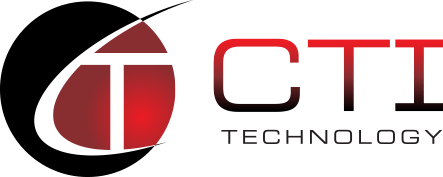How To Create A Security First Culture Inside Your Organization: A Comprehensive Guide
In today’s rapidly evolving digital landscape, organizations face many cybersecurity threats that can severely affect their operations and reputation. As a result, it is no longer sufficient to rely on tactical and episodic security measures. Instead, a strategic and long-term approach is needed to create an organization’s security-first culture. This involves fostering a mindset where every member prioritizes security in their day-to-day activities and understands their responsibility to protect the organization.
A security-first culture begins with understanding the core principles of information security, which include confidentiality, integrity, and availability. This foundation paves the way for developing a well-trained workforce aware of security risks. Moreover, strong leadership commitment to security sets the tone for the entire organization, driving the adoption of comprehensive security policies and procedures. Integrating security into all aspects of the business and ensuring ongoing improvement and adaptation makes building and maintaining an organization-wide culture that prioritizes security possible.
Key Takeaways
- Building a security-first culture requires a strategic, long-term approach and strong leadership commitment.
- Developing a security-minded workforce with comprehensive policies and procedures is key to promoting a security-first culture.
- Ongoing improvement and adaptation are essential for maintaining a strong security culture in the face of evolving threats.
Understanding Security First Principles
Defining a Security First Approach
A security-first approach means protecting an organization’s assets, information, and systems. It involves embedding security into your organization’s culture, policies, and processes. While security risks can never be entirely eliminated, a security-first mindset can significantly reduce vulnerabilities and enhance the organization’s resilience.
To accomplish this, it is essential to:
- Develop a comprehensive security strategy that addresses short-term and long-term concerns
- Consistently invest in staff training and awareness programs
- Keep up to date with current threats and trends in the cybersecurity landscape
Fundamentals of a Secure Organization
In building a security-first culture within your organization, consider incorporating the following fundamentals:
- Awareness: Ensure all employees know potential security threats and understand their role in protecting the company’s assets. Regular training and communication can keep awareness levels high.
- Clear Policies and Procedures: Establish and enforce comprehensive policies for all security aspects, including data access, device usage, password management, and incident response. Make sure these policies are documented and easily accessible to all staff members.
- Layered Security: Implement multiple layers of defense to protect your organization’s assets. This can include firewalls, intrusion prevention systems, secure authentication methods, encryption, and regular monitoring.
- Continuous Improvement: Continuously assess and improve your security posture by conducting regular security audits, updating and patching software, and reviewing policies for effectiveness.
- Leadership Commitment: Foster a culture of security at all levels by demonstrating top-down commitment from leadership. This includes visibly supporting security initiatives, providing the necessary resources, and recognizing the efforts of staff members who contribute to a secure environment.
By implementing these principles and working together as an organization, we can build a strong security-first culture that minimizes risk and enhances our resilience against cyber threats.


Leadership Commitment to Security
Executive Support for Security Initiatives
To create a security-first culture, it is essential to have strong executive support. This means that the top-level management should actively promote and endorse cybersecurity initiatives within the organization. By demonstrating their commitment, executives can influence the organization to prioritize security.
One effective way to show support is by allocating sufficient resources to security programs. This may include funding for cybersecurity tools, training, and personnel. Additionally, leaders should regularly communicate about the importance of security, emphasizing its relevance to the business’s overall success.
Incorporating Security into Corporate Strategy
Integrating security into the company’s overall corporate strategy is crucial to building a security-first culture. This begins with conducting thorough risk assessments and understanding the specific threats that the organization faces. By identifying these risks, companies can develop an integrated cybersecurity strategy that involves all stakeholders and departments.
To make security an integral part of the corporate strategy, here are some practical steps to follow:
- Collaboration: Encourage cross-functional collaboration between the security, IT, and business teams to comprehensively understand risks and how they impact the organization.
- Training: Implement regular security awareness training for employees at all levels so they understand their role in safeguarding the organization’s data and systems.
- Continuous improvement: Regularly review and update security policies and procedures to adapt to the ever-evolving threat landscape.
By incorporating security into the foundation of the organization’s strategy, businesses can embed a security-first mindset among employees. This approach fosters an environment where everyone understands the importance of cybersecurity and actively works to protect the organization from potential threats.
Building a Security-Minded Workforce
Creating a security-first culture in your organization starts with building a workforce that values and prioritizes security. This section will discuss two critical aspects of building a security-minded workforce: hiring for a security mindset and promoting continuous security education and awareness.
Hiring for Security Mindset
When recruiting new employees, it’s crucial to prioritize candidates who exhibit a strong understanding of security concepts and a commitment to protecting company and customer data. To evaluate candidates for this mindset, consider the following:
- Review their experience: Look for experience implementing security measures, participating in security projects, or working in industries with high security standards.
- Ask security-related questions during interviews: Questions about their approach to security, examples of security challenges they faced, and how they solved them can provide valuable insights into their security mindset.
- Evaluate their problem-solving skills: A strong security mindset involves identifying potential threats and vulnerabilities and devising mitigation strategies.
Continuous Security Education and Awareness
Creating a security-first culture involves ongoing education and awareness for all employees. Here are some strategies to promote a security-conscious workforce:
- Regular security training: Offer periodic training to keep employees up-to-date on the latest security trends, threats, and best practices. Include different training formats such as e-learning, workshops, and simulations to cater to diverse learning styles.
- Security newsletters and updates: Share regular security updates and advice through newsletters, emails, or an internal blog. This will help keep security top-of-mind among your employees.
- Promote a culture of reporting: Encourage employees to report suspicious activities or incidents promptly by offering anonymous reporting options and a no-blame incident reporting culture.
- Reward secure behavior: Recognize and reward employees who demonstrate exceptional security awareness or contribute positively to the organization’s security posture.
Focusing on these aspects can lay the foundation for our organization’s strong, security-first culture.
Developing Security Policies and Procedures
Creating Comprehensive Security Policies
To create a security-first culture inside an organization, we must develop comprehensive security policies covering various aspects of our operations. These policies should be clear, concise, and easily accessible to all employees. They should cover topics such as:
- Access control: Define who has access to what information and resources within the organization. This includes both physical and digital access controls.
- Data protection: Establish guidelines for handling, storing, and transmitting sensitive data, including customer information, employee records, and intellectual property.
- Incident response: Outline procedures for detecting, reporting, and responding to security incidents, including potential data breaches or cyberattacks.
- User awareness and training: Stress the importance of security awareness and provide ongoing training for employees to help them understand their roles and responsibilities in maintaining a secure environment.
Implementation of Security Standards
Once we have established our security policies, it’s crucial to implement security standards across the organization. This ensures that our policies are effectively put into practice. Key steps in implementing security standards include:
- Establish clear roles and responsibilities: Assign specific security tasks and responsibilities to different teams or individuals within the organization. This includes IT administrators, department heads, and end-users responsible for maintaining security within their departments.
- Regularly update and review policies: Keep policies current as new threats emerge and technologies change. Set a schedule for periodic reviews and updates to ensure relevancy and accuracy.
- Implement technical controls: Deploy security tools and technologies, such as firewalls, intrusion detection systems, and endpoint protection, to help enforce the policies and protect the organization’s assets.
- Conduct audits and assessments: Perform regular security audits, vulnerability assessments, and penetration tests to evaluate the effectiveness of our security measures and identify gaps in our defenses.
- Monitor and measure effectiveness: Track key performance indicators (KPIs) related to security, such as the number of incidents detected and prevented or the effectiveness of employee training, to measure the success of our security initiatives.
By combining well-defined security policies with the practical implementation of security standards, we can lay the foundation for creating a security-first culture within our organization. This approach will help us build a strong security posture, protecting critical assets and information.
Fostering a Culture of Responsibility
Creating a security-first culture within an organization starts with fostering a sense of responsibility among all employees. In this section, we will discuss how to promote employee accountability and incentives and report and respond to security incidents.
Employee Accountability and Incentives
Everyone within the organization needs to understand their role in maintaining security. We recommend implementing regular security training to ensure all employees are aware of potential threats and best practices for preventing them. This can include password management, email security, and data protection.
To further encourage accountability, we suggest developing a set of security KPIs (Key Performance Indicators) that align with your organization’s goals. These can include metrics like:
- Percentage of employees completing security training
- Number of detected security vulnerabilities
- Frequency of security incident reports
By tracking these KPIs, you can measure the success of your security-first culture and continue to make improvements.
In addition to training and KPIs, consider implementing an incentive program to reward employees who exemplify security best practices. For example, you could offer bonuses or other perks for employees who:
- Identify and report potential security risks
- Consistently follow security guidelines and procedures
- Help to improve or develop internal security policies
Reporting and Responding to Security Incidents
A crucial aspect of fostering a culture of responsibility is having a comprehensive method for reporting and responding to security incidents. We advise creating a clear, documented process for employees to follow in the event of a security breach or concern. This process should include:
- Incident reporting: Establish a system for logging security incidents, including a designated contact or team responsible for receiving and tracking reports. Make sure employees know how to submit a report and who to notify.
- Incident response: Develop a protocol for handling security incidents, complete with defined roles and responsibilities for team members. In addition, your response plan should include steps for containing the incident, assessing damage, and restoring normal operations.
- Communication: Communicate any security incidents and resolutions to relevant stakeholders, ensuring they are aware of the situation and any necessary actions.
- Learning and improvement: After each incident, evaluate your response to identify areas for growth and improvement. Update your processes and training as needed to prevent similar incidents in the future.
By putting these measures in place, we can foster a culture of responsibility and commitment to security within your organization. This will not only make your business more secure but also help you to build trust and credibility among your clients and partners.
Leveraging Technology for Security
This section will discuss two important aspects of leveraging technology for security: implementing secure design principles and employing cutting-edge security tools.
Secure by Design Principles
Secure by design principles focus on integrating security measures during development, ensuring that systems are designed with a security-first mindset. Some key elements of a secure-by-design approach are:
- Performing threat modeling: Identify and analyze potential threats and vulnerabilities in the system architecture at an early stage.
- Adhering to security best practices: Adopt best practices like using strong encryption, access control mechanisms, and secure development frameworks.
- Regularly conducting code reviews: Detect and fix vulnerabilities and security flaws in the code through regular reviews and audits.
- Implementing robust testing: Perform thorough security testing to uncover potential weaknesses.
By integrating security into the design process, organizations can proactively prevent potential threats and ensure systems are built with safety in mind.
Employing Cutting-Edge Security Tools
Investing in cutting-edge security tools is critical to creating a security-first culture. Some essential tools to consider include:
- Intrusion Detection and Prevention Systems (IDPS): Monitor and analyze network traffic to detect suspicious activities and prevent unauthorized access.
- Data Loss Prevention (DLP): Identify and restrict the sharing of sensitive information, safeguarding it from theft or accidental leakage.
- Endpoint Detection and Response (EDR): Monitor activity on endpoints like PCs and mobile devices, allowing for real-time threat detection and response.
- Security Information and Event Management (SIEM): Aggregate and analyze logs and events from multiple sources, enabling swift identification and response to security incidents.
By deploying advanced security tools, organizations can bolster their defense mechanisms to protect valuable data and resources, enhancing the overall security posture.
Measuring Security Culture Success
Key Performance Indicators for Security
To measure the success of a security-first culture in our organization, we need to establish Key Performance Indicators (KPIs) that reflect our security objectives. These KPIs should align with our organization’s overall mission, values, and strategic goals. Some examples of KPIs include:
- Security awareness training completion rates: Keeping track of the percentage of employees who successfully completed training courses. This helps ensure our staff is knowledgeable and equipped to handle potential security threats.
- Phishing simulation click rates: Monitoring the click rates for simulated phishing emails sent to employees can help assess the effectiveness of our ongoing training and awareness efforts.
- Incident response time: Measuring the average time it takes for our security team to identify, investigate, and remediate security incidents. Faster response times demonstrate our commitment to resolving issues quickly and efficiently.
With these KPIs in place, we can measure our security culture’s success by tracking improvements over time and comparing our performance with industry benchmarks.
Regular Security Audits and Assessments
In addition to tracking KPIs, we should also conduct regular security audits and assessments to evaluate the effectiveness of our security measures. These evaluations can identify system and process vulnerabilities while pinpointing improvement areas. Here are some essential considerations for conducting security audits and assessments:
- Develop a schedule: Conducting regular, planned audits and assessments ensures that our security practices are up to date-and remain effective in the face of evolving threats.
- Involve all stakeholders: Our security-first culture should involve input from all areas of the organization, including IT, HR, management, and end users. Collaboration encourages a shared understanding and commitment to security.
- Act on findings: After completing a security audit or assessment, acting on the findings and addressing any identified vulnerabilities is crucial. Implementing necessary changes and improvements builds a stronger security posture and demonstrates our commitment to a security-first culture.
By establishing KPIs and conducting regular audits and assessments, we can measure the success of our security culture and make data-driven decisions to continuously improve our organization’s security posture.
Ongoing Improvement and Adaptation
Keeping Up with Emerging Threats
To maintain a security-first culture within our organization, we must stay up-to-date with the latest cyber threats and risks. By being aware of these emerging dangers, we can dynamically amend our security protocols and train our employees to handle them effectively. We recommend implementing the following practices:
- Regular security updates and patches: Ensure that all software, hardware, and systems within the organization are updated with the latest security patches.
- Continuous learning: Encourage employees to attend cybersecurity workshops, seminars, or webinars to stay aware of the latest threats and best practices in IT security.
- Threat intelligence sharing: Collaborate with other organizations, networks or industry associations to share information about emerging threats, vulnerabilities, and attack patterns.
Evolution of Security Practices
Over time, our organization’s security practices must evolve to address the ever-changing cybersecurity landscape. This includes updating our network architecture, implementing new security policies, and periodically reviewing the efficacy of existing policies. Here are some suggestions for adapting to the evolving cyber environment:
- Risk assessments: Conduct realistic risk assessments as a part of routine business operations to measure the current state of our security culture. This will help us identify gaps and areas that require improvement.
- Technology adoption: Stay updated on the latest security technologies and tools that can help enhance our organization’s security posture, such as advanced threat detection systems and multi-factor authentication.
- Policy reviews: Periodically revisit and update security policies based on the changes in the threat landscape, regulatory requirements, and organizational structure.
- Employee training: Offer regular training sessions to employees, including new hires, to inform them about the latest security practices, protocols, and their roles in maintaining a security-first culture.
By focusing on ongoing improvement and adaptation, we can ensure that our organization’s security-first culture remains strong and effective in the face of emerging threats and evolving cybersecurity practices.
Why Is CTI Technology The Best Choice For IT Services In The Chicagoland Region?






















